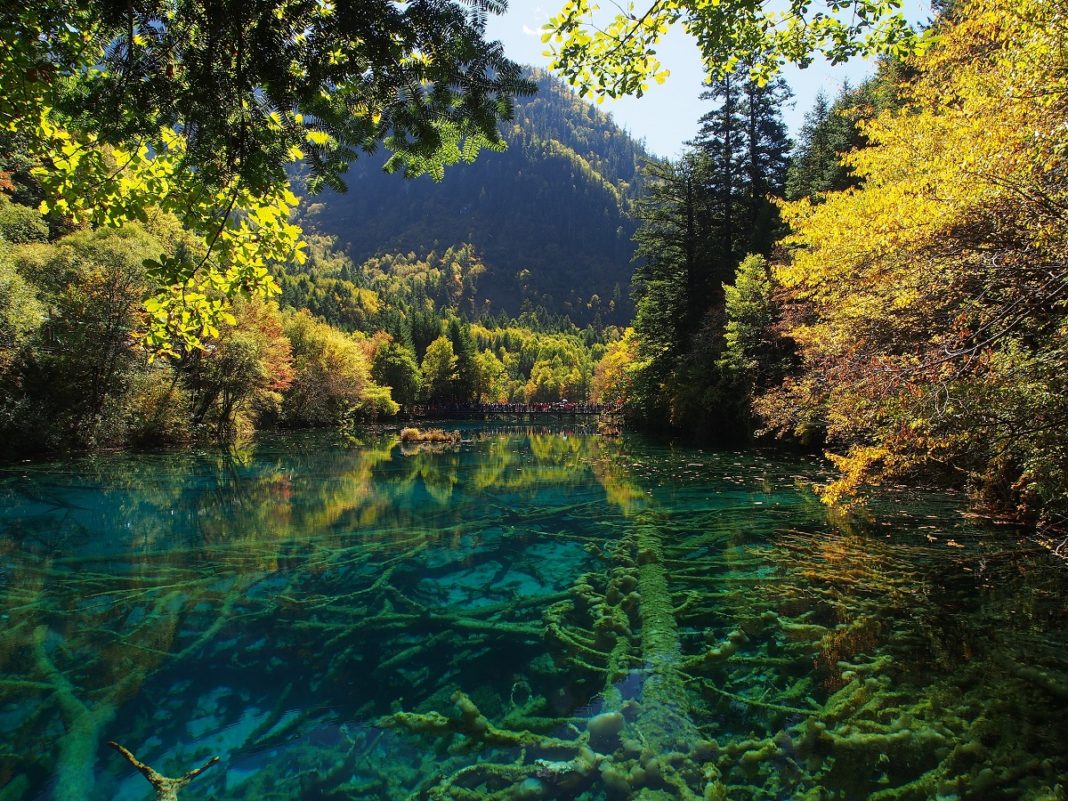Jiuzhaigou is a nature reserve and national park located in the north of Sichuan Province in southwestern China. The Jiuzhaigou valley is part of the Min Mountains on the edge of the Tibetan Plateau and stretches over 72,000 hectares. It is known for its many multi-level waterfalls, colorful lakes, and snow-capped peaks. Its elevation ranges from 2,000 to 4,500 meters.
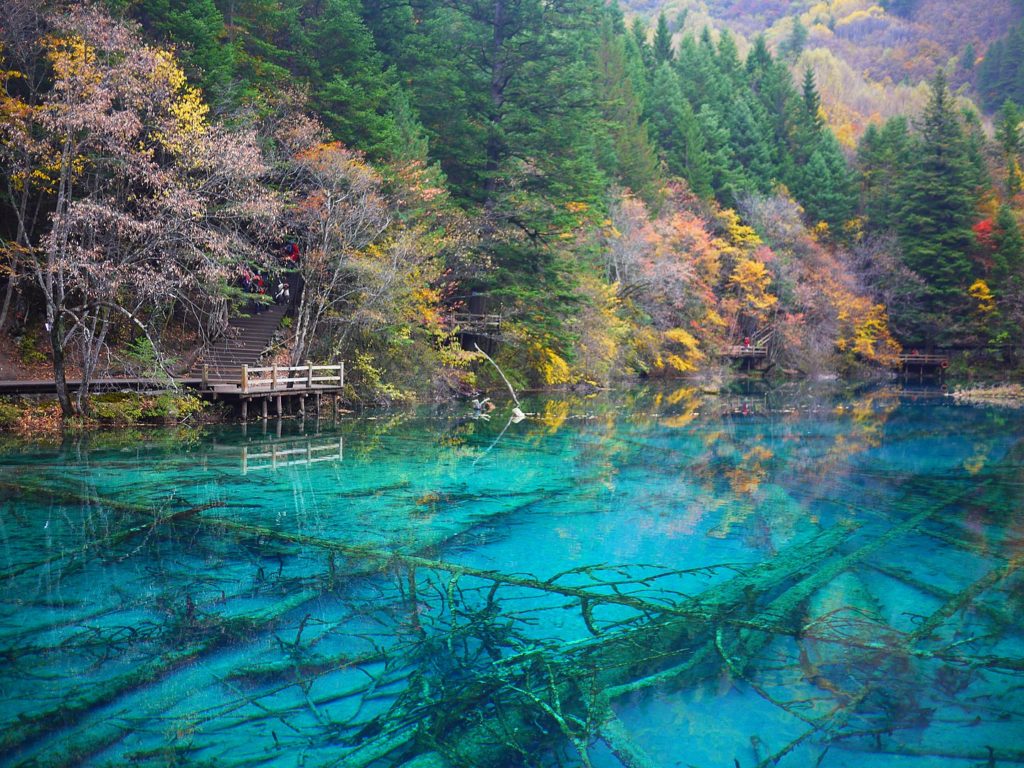
Jiuzhaigou (literally “Nine Settlement Valley”) takes its name from the nine Tibetan settlements along its length. The remote region was inhabited by various Tibetan and Qiang peoples for centuries. Until 1975 this inaccessible area was little known. Extensive logging took place until 1979 when the Chinese government banned such activity and made the area a national park in 1982. An Administration Bureau was established and the site officially opened to tourism in 1984; the layout of facilities and regulations was completed in 1987.
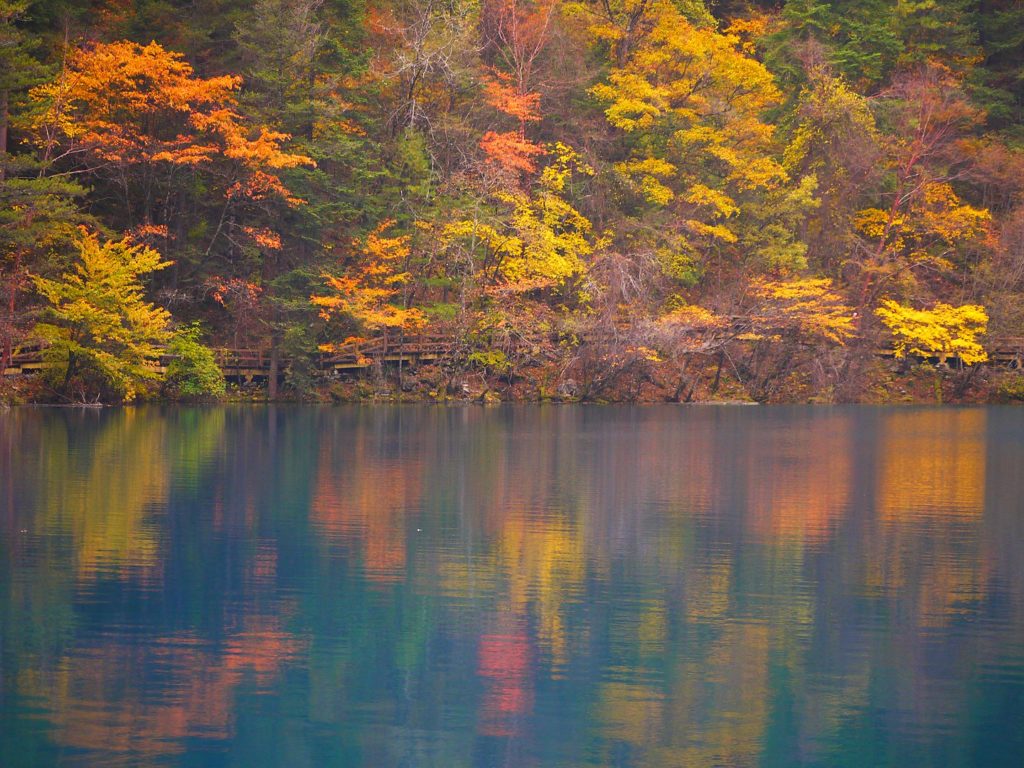
Jiuzhaigou’s landscape is made up of high-altitude karsts shaped by glacial, hydrological, and tectonic activity. It lies on major faults on the diverging belt between the Qinghai-Tibet Plate and the Yangtze Plate, and earthquakes have also shaped the landscape. The rock strata are mostly made up of carbonate rocks such as dolomite and tufa, as well as some sandstone and shales.
The valley includes the catchment area of three gullies (which due to their large size are often called valleys themselves) and is one of the sources of the Jialing River via the Bailong River, part of the Yangtze River system.
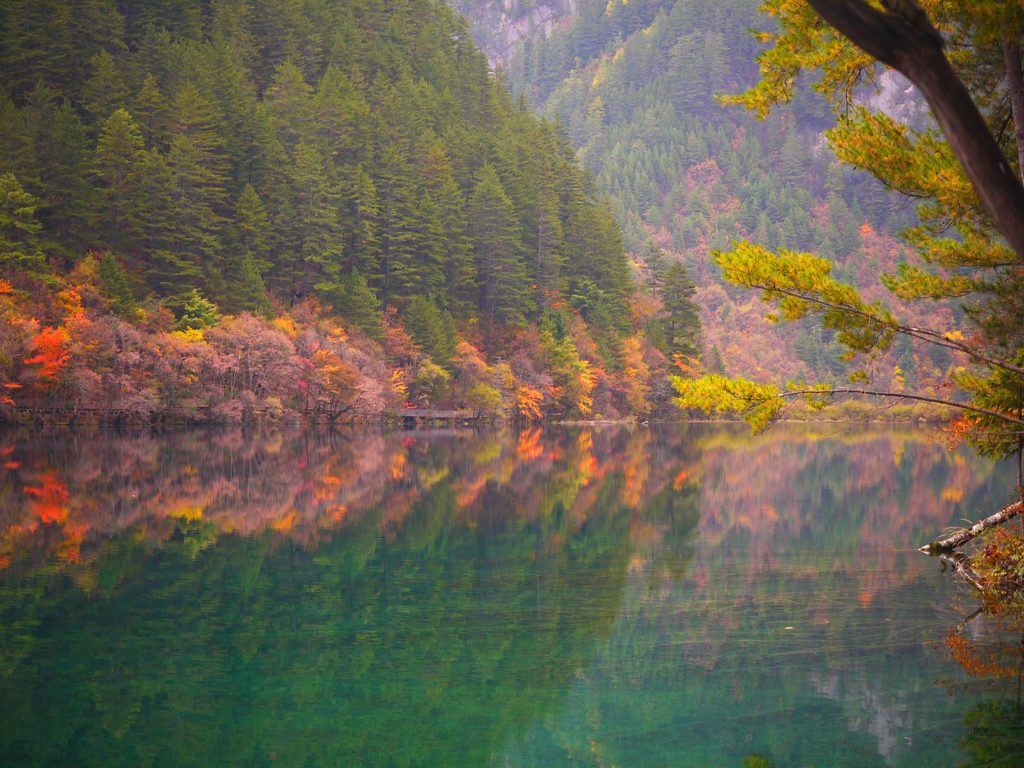
Jiuzhaigou’s best-known feature is its dozens of blue, green, and turquoise-colored lakes. The local Tibetan people call them Haizi in Chinese, meaning “son of the sea”. Originating in glacial activity, they were dammed by rockfalls and other natural phenomena, then solidified by processes of carbonate deposition. Some lakes have a high concentration of calcium carbonate, and their water is very clear so that the bottom is often visible even at high depths. The lakes vary in color and aspect according to their depths, residues, and surroundings. Some of the less stable dams and formations have been artificially reinforced, and direct contact with the lakes or other features is forbidden to tourists.
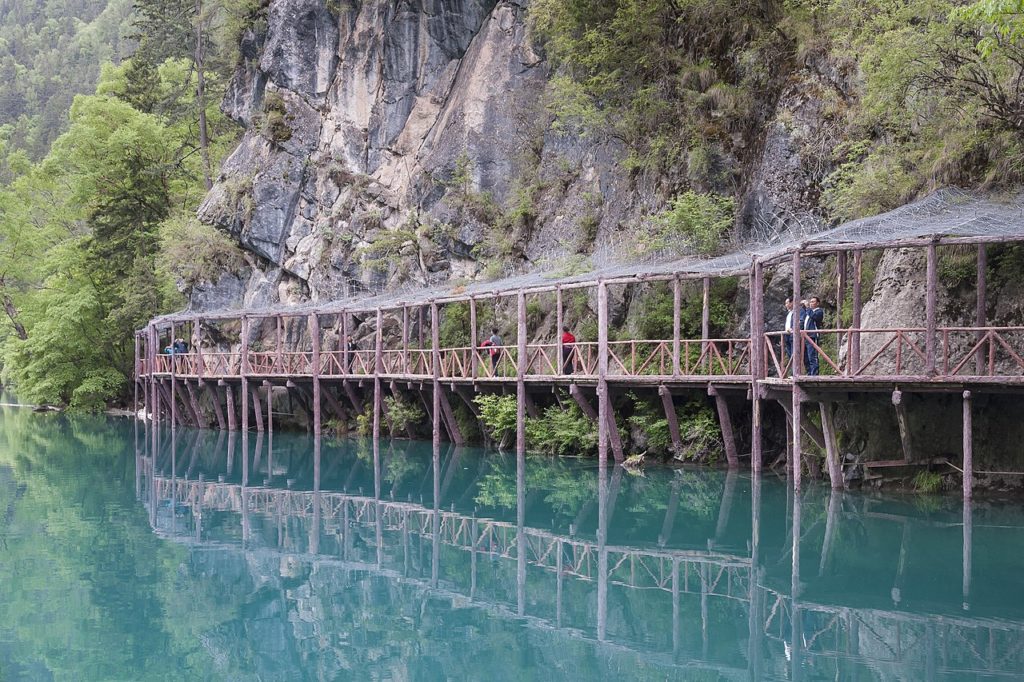
Jiuzhaigou is composed of three valleys arranged in a Y shape. The Rize and Zechawa valleys flow from the south and meet at the center of the site where they form the Shuzheng valley, flowing north to the mouth of the valley. The mountainous watersheds of these gullies are lined with 55 km of roads for shuttle buses, as well as wooden boardwalks and small pavilions. The boardwalks are typically located on the opposite side of the lakes from the road, shielding them from disturbance by passing buses.
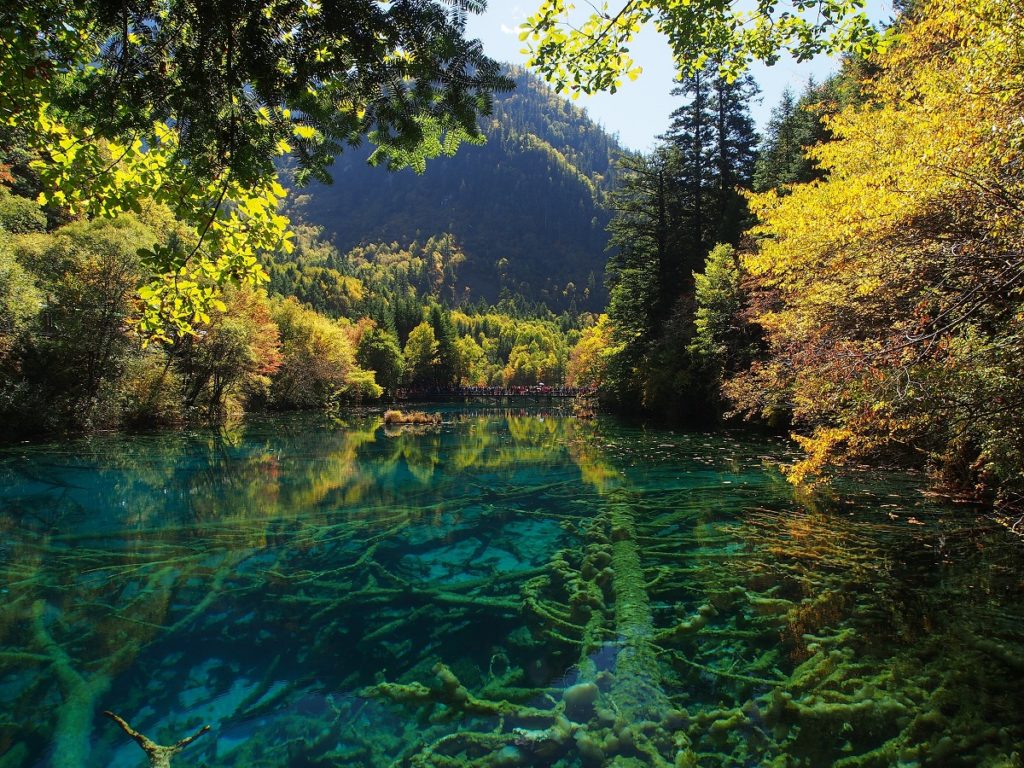
Since opening, tourist activity has increased every year: from 5,000 in 1984 to 170,000 in 1991, 160,000 in 1995, to 200,000 in 1997, including about 3,000 foreigners. Visitors numbered 1,190,000 in 2002. As of 2004, the site averages 7,000 visits per day, with a quota of 12,000 being reportedly enforced during high season. The Town of Zhangzha at the exit of the valley and the nearby Songpan County features an ever-increasing number of hotels, including several luxury five-stars, such as Sheraton.
According to Wikipedia





